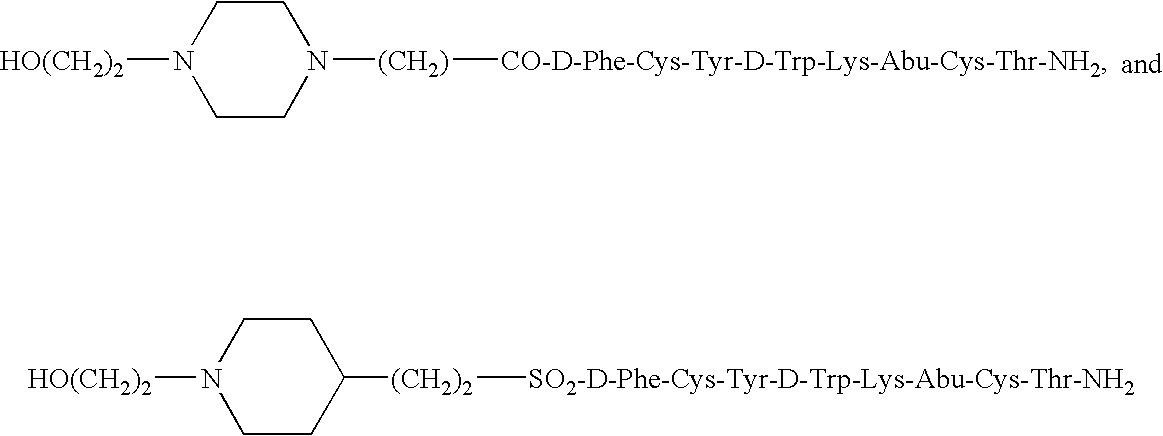Encapsulation of water soluble peptides
- Summary
- Abstract
- Description
- Claims
- Application Information
AI Technical Summary
Benefits of technology
Problems solved by technology
Method used
Image
Examples
example 1
1 (a): Preparation of Neutralized Tryptorelin in Presence of Hydroxylapatite
[0237] 200 mg of Hydroxyapatite (HAP) (American International Chemical, Natick, Mass. having particle size 2 μm) was suspended in water. 100 mg of the acetate salt of pyroGlu-His-Trp-Ser-Tyr-D-Trp-Leu-Arg-Pro-Gly-NH2 (Tryptorelin, Kinerton, Dublin, Ireland) was dissolved in 1 ml of water and this solution was added to the suspension of HAP. The pH of the slurry was brought to about 7-8 by adding 1N NaHCO3 dropwise. The precipitate was left stirring for about 2 hrs. The precipitate was collected by centrifugation. The precipitate was suspended in water and lyopilized.
[0238] Peptide content by nitrogen analysis=23.6% and by HPLC=22.1%.
1(b): Preparation of Neutralized Polyvinyl Alcohol (PVA) Solution
[0239] Commercially available PVA has pH lower than 5, due to the presence of hydrolysis product of poly(vinylacetate) from which PVA is prepared. The PVA solution was cleaned by preparing a concentrated solut...
example 2
2(a): Preparation of Water-Insoluble Salts of Peptides with Carboxylated p(dl-LGA)
[0245] Water insoluble salts of peptides with carboxy functionalized PLGA were prepared as described in U.S. Pat. No. 5,672,659 the teachings of which are incorporated herein by reference.
[0246] In a typical experiment 4 g of p(dl-lactide-co-glycolide) having Mn=5560 and Mw=12200, acid and polymer composition 70130 dl-lactide / glycolide, prepared using 2% malic acid was dissolved in acetone. 0.73 ml 1N NaHCO3 was added and stirred. The acetate salt of pyroGlu-His-Trp-Ser-Tyr-D-Trp-Leu-Arg-Pro-Gly-NH2 (Kinerton, Dublin, Ireland) (0.64 g) was dissolved in 2 ml water and was added to the polymer solution. The solution was stirred for about 2 hrs and precipitated in 400 ml cold water kept at about 4-6° C. Peptide content determined by nitrogen analysis was 9.8%.
2(b): Preparation of Microspheres of 2(a)
[0247] 1.5 g of the above vacuum dried complex was dissolved in 15 ml of DCM. The DCM solution was co...
PUM
| Property | Measurement | Unit |
|---|---|---|
| Fraction | aaaaa | aaaaa |
| Percent by mass | aaaaa | aaaaa |
| Percent by mass | aaaaa | aaaaa |
Abstract
Description
Claims
Application Information
 Login to View More
Login to View More - R&D
- Intellectual Property
- Life Sciences
- Materials
- Tech Scout
- Unparalleled Data Quality
- Higher Quality Content
- 60% Fewer Hallucinations
Browse by: Latest US Patents, China's latest patents, Technical Efficacy Thesaurus, Application Domain, Technology Topic, Popular Technical Reports.
© 2025 PatSnap. All rights reserved.Legal|Privacy policy|Modern Slavery Act Transparency Statement|Sitemap|About US| Contact US: help@patsnap.com



